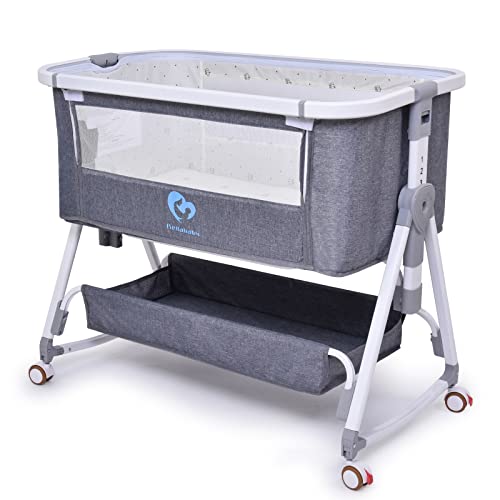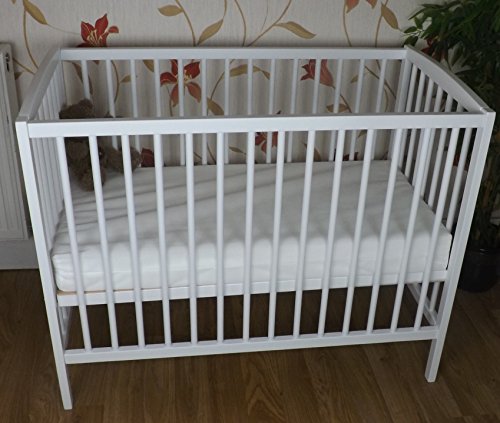The 10 Most Terrifying Things About Cot Sales
작성자 정보
- Felicitas 작성
- 작성일
본문
 Cot Sales and Ambulance Services
Cot Sales and Ambulance Servicescot bed sales sales are increasing because of higher birth rates and increased awareness about safety for babies. Many companies are also introducing new models of cots that can be converted into day beds.
A consistent and rigorous methodology for assigning COT designations is crucial to ensure accuracy in government pricing computations. A clearly documented SOP along with an auditing process that is thorough are important.
Demand for ambulances is increasing
The global market for ambulance services is booming because of the increasing rate of traumatic accidents as well as chronic health issues. These issues are often associated by medical emergencies that require prompt and immediate intervention to save lives. This increased demand emphasizes the importance of having efficient emergency response systems and readily accessible healthcare facilities for the general public's well-being.
Ambulances are special vehicles that transport patients to health facilities and hospitals and provide essential out-of-hospital care during the journey. The demand for these vehicles is fueled by factors like an increase in road accident, a rise in elderly patients and favorable reimbursement policies. Additionally, the demand for air ambulances is increasing due to the growing need for rapid and reliable medical transport over long distances.
Based on the service provider market, the global ambulance market is divided into hospital-based, independent, and government. Hospital-based ambulance services are provided primarily by healthcare facilities and private companies. The independent segment, which includes private-owned and operated air ambulances is expected to expand at a rapid pace in the forecast time. The government-operated segment, on the contrary, is comprised of ambulances operated by municipal, state or military units.
Based on the type of fuel used, the global ambulance services market is categorized into diesel, gasoline, and electric. In the forecast timeframe the diesel segment is anticipated to bring in the highest revenue share. Diesel-powered ambulances are highly sought-after by fleet owners due to their reliability and performance. Additionally, the fuel efficiency of diesel engines is increasing with technological advancements. However, growth in the diesel sector is hindered by stringent emission regulations.
The demand for ambulances is caused by the rise of new medical technology. They include telemedicine, which enable ambulances to talk to doctors in real-time and receive treatment-related instructions. These technologies are helping to improve patient outcomes and decrease emergency department (ED) admissions.
North America dominates the global ambulance services market, followed by Europe and Asia Pacific. North America's market is driven by a high demand for high-quality healthcare and a well-established healthcare system, and favorable reimbursement policies. Furthermore, the strategic efforts of market entities and increasing the number of geriatrics in the region are also boosting the potential for growth of the market.
More expenditures in the healthcare sector
The healthcare sector is responsible for a significant portion of national economic activity. It also helps to develop human capital as well as improving labor productivity. It is important to increase spending in this sector for economic performance. However, it's not always straightforward to determine how health care spending impacts the country's economy. Many factors affect economic growth and health care spending. These factors can differ between industries and regions.
In the US, private businesses households, as well as the government are the primary source of health care funding. Private expenditures by households and businesses are financed through premiums for private health insurance as well as out-of-pocket expenditures, and government program spending (financed by dedicated taxes or general revenue). Government program spending is a significant driver of overall health spending trends. In the COVID-19 epidemic government spending on long-term, non-hospital-care services increased dramatically. More than one third (33%) of all health care expenditures in the United States are accounted for by government programs.
Health expenditures are often measured by the Gross Domestic Product (GDP). GDP measures a nation's total economic output. In the case health care, it refers to the production of goods and services. An expanding economy is linked with a greater GDP and more jobs. This is the reason it's essential to know the impact of healthcare spending on GDP and other indicators of economic growth.
It is important to think about the impact of healthcare expenditures on economic performance when developing public policies and evaluating new healthcare initiatives. Numerous studies have demonstrated that increased investment in healthcare enhances the productivity of human capital and stimulates economic performance (1 2, 3). These effects are complicated and can differ based on which sector and population groups are affected by the expenditure.
To ensure that the prices of government agencies are consistent and accurate it is essential to have a documented procedure for assigning COTs. Inconsistency can lead to inaccurate data that leads to negative Medicaid rebates as well as NFAMP and the 340B/PHS ceiling rates. Incorrect COT designations could result in chargebacks, contract restrictions, and other financial consequences. To avoid these issues, it is recommended to establish an assignment method for COT built on SOPs from the manufacturer and an cot beds reference library.
The demand for convertible cribs is growing.
As baby products get more sophisticated, parents are willing to spend a lot of money on their children. This has led to an increase in demand for cribs that can be converted into daybed or toddler bed. These conversion kits are a great way to extend the life of a crib while also saving money. Additionally, they help parents avoid the last minute rush to find a suitable full size bed for their child. In the coming years the demand for cribs of this kind will continue to grow.
The market for cribs and cots has been growing quickly due to the growing birth rates and the standards of living around the world. The market includes a range of essential baby care products like strollers, monitors, cribs and cots. The rise in nuclear families and working individuals is driving the need for high-end, secure, and multifunctional baby furniture. Leading brands like DaVinci Baby have multifunctional cribs that can be transformed into toddler beds or a full-sized bed. This allows parents to maximize their investment.
They are typically made of durable wood or metal which makes them a great option for infants and young children. They are easy to clean and therefore is a great option for families with busy schedules. Many are also designed with safety features such as built-in side guard rails that protect against falls and a secure mattress latch. Some even feature adjustable mattress heights to accommodate different ages.
Specialty stores and online distribution channels offer baby cribs and cots for sale. The designs are available in different styles, from traditional to contemporary. Some include features like sensorSafe technology and airbag systems to increase security and safety. The use of environmentally friendly materials in the manufacturing process is also increasing.
As babies spend on average two and quarter years in their cots they are a crucial part of their development. This has led manufacturers to design new cribs that combine style with comfort and functionality. Cradlewise, for example, offers an intelligent crib that utilizes artificial intelligence to adapt to the baby's sleeping habits. It also has a bassinet mode for newborns that offers comfort and security.
The demand for multifunctional cots is on the rise
The market for baby cots in the world is expected to grow rapidly due to changing consumer preferences and technological advancements. The market is influenced by regional dynamics as well. Asia, for instance, is a major driver of market growth because of rapid urbanization and the rise in disposable income. Parents in these countries are seeking multi-functional products that can save space and offer convenience. Companies that can align product offerings with these preferences will be successful on the market.
Manufacturers are introducing smart technology to baby cots in order to improve functionality and ease-of-use. For instance, a recent generation of smart cots comes with IoT capabilities that allow parents to monitor their children from their mobile devices. These advances make cots for babies more appealing and adaptable, which boosts their demand.
The market for multifunctional nursery cots has also been driven by the increasing trend of urban living. Families living in smaller apartments are seeking furniture that makes the most of space, so cots that convert into playpens or even adult beds are appealing to many consumers. In addition, safety is an important concern for many families and has led to an increase in demand for cots that comply with stringent regulations.
Customers are also seeking multifunctional cots with stylish designs. Brands that focus on design and quality are gaining popularity with consumers, particularly millennial parents. This demographic is more tech knowledgeable and focused on research, which has increased the demand for furniture for babies that combines function with aesthetics.
The changing economic climate is another factor that influences the sales of cots. Families tend to prioritize necessities in times of tight budgets. This has led some manufacturers to launch affordable options, allowing them to compete with lower-cost competitors in the marketplace. The rise of ecommerce has also changed the purchasing habits of consumers which has enabled them to access a larger selection of baby products at competitive prices.
In the future, the multifunctional baby cot market will continue to expand, driven by new trends and a growing importance of family-centered values. The growth of the market could be slowed by obstacles like fluctuating raw materials costs and intense competition. Therefore, it is essential that manufacturers continue to change and adapt to the changing market.

관련자료
-
이전
-
다음
댓글 0
등록된 댓글이 없습니다.
